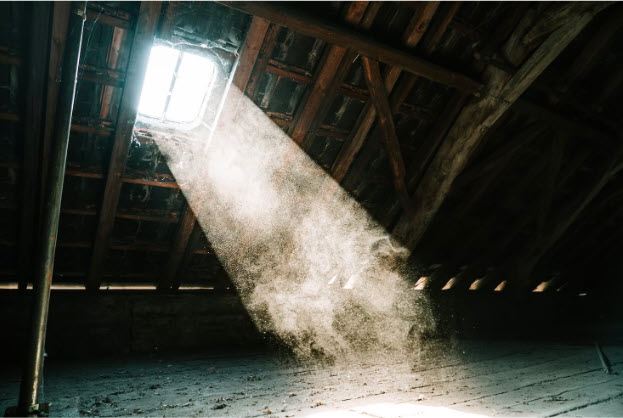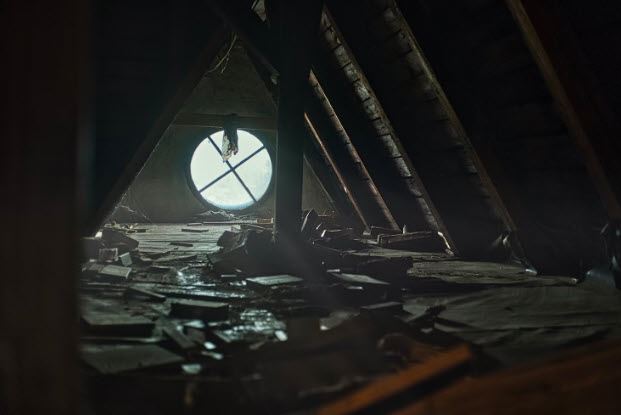The attic has long been a misunderstood area of the home, a dark space central to ghost stories and tales of haunted houses. However, in the grand scheme of home functionality, it is important to nip this stereotype in the bud. Having a fresh, efficient attic is paramount to keeping energy consumption under control and protecting the structural integrity of the home. With this in mind, keep reading for a detailed breakdown on the importance of proper attic ventilation.
Why Attic Ventilation Is Important and Key Components

Attic ventilation is critical for ensuring that heat and moisture don’t build up in the roof of your house. As hot air rises, the attic can become unbearably hot if not given the chance to escape. Not only will this destroy the HVAC budget, but the hot, humid air is readily absorbed by the roof, ceiling, and ceiling components, creating a breeding ground for mold, mildew, rot, and related pestilence that can wreck the structural integrity of your home.
When establishing the proper attic ventilation infrastructure for your home, there are two primary components: the intake vents and the exhaust vents.
The intake vents include the eaves, frieze board, soffit, and fascia of the roof. They allow fresh, ambient air to flow into the attic.
The exhaust vents typically come in the form of ridge vents. They allow the hot, moist air to escape from the roof apex.
The efficient circulation of ambient air through your attic space is not only critical for maintaining the temperature and condition of your roof, but the entire frame and structural basis of your home.
The Effects of Poor Attic Ventilation

The effects of poor attic ventilation are fairly evident. Utility bills will increase as the HVAC system works to cool the warm air trapped in the attic. Roof beams, trusses, fascia, and wood shingles will warp due to the trapped moisture. Attic insulation will get damp and lose its effectiveness. Leaks in the roof may develop that create a trickle down effect to other areas of the home.
Signs of Poor Attic Ventilation

There are a number of signs that your attic is not vented properly. Some of the most common include:
- Higher-than-expected utility bills
- An uptick in allergy symptoms among members of your household, which can be caused by the mold and fungus spores multiplying in a humid attic
- Ice buildup around the edge of the roof during winter
- A wavy appearance of your roof, caused by warping in the roof substrate
- Rust buildup on metal components in the attic. Check the condition of the nail heads in the attic and see if they are brown
- Dampness or frost buildup on the attic floor
- More frequent servicing of your HVAC system. The increased load can cause your system to go on the fritz more often
While any of these components by themselves don’t necessarily mean that your attic ventilation is substandard and could be caused by other issues, their presence in conjunction with one another is a pretty clear indication that something is awry in the attic. Get the attic ventilation checked immediately.
Ventilation Differences Between Pitched and Flat Roofs
Most residential homes feature a pitched roof, with an attic that exists in the “triangle” between the ceiling and the roof decking. However, flat roofs are becoming increasingly popular amid the rooftop deck tile trend, so it is important to understand how ventilation works for flat roofs.
The attic ventilation components for a pitched roof are largely as described throughout this article.
Vented soffit from the roof overhang takes in ambient air. An insulation baffle is used to prevent ceiling insulation from blocking ambient airflow, and this fresh air circulates throughout the attic. At the top of the roof, or the high point of the pitch, ridge vents suck the attic air out and release it to the environment.
The ventilation concept for a flat roof is similar but not exactly the same. During the winter months, warm air from the home’s interior sticks to the colder flat roof. This can lead to condensation and the potential risk for moisture damage.
Therefore, when ventilating a flat roof, an initial thermal insulation layer with a vapor barrier must be applied beneath the roof. This ensures that hot air does not stick to the colder roof and keeps it flowing to the escape vent. This warmer air from the home’s interior then mixes with ambient air brought in by a pop-vent intake on top of the roof. It is circulated through the roof, escaping through an exhaust vent on the other side. Ventilation vents on flat roofs are recognizable for their mushroom-like appearance protruding from the surface.
Take Steps to Ensure Proper Attic Ventilation Today
Ensuring the proper attic ventilation is an important aspect of keeping energy bills under control and protecting the bones of your structure. If you suspect that your attic ventilation may be lacking, contact Cert-A-Roof today for a consultation!
Roger Marx is a freelance writer that loves sharing his knowledge and expertise on home improvement projects of all kinds. He also writes a lot regarding the commercial side of things as well. He lives in Minneapolis, Minnesota where he enjoys spending time with his wife and working on backyard projects in his spare time. Roger’s work as a freelance writer can be found on Building Product Advisor, a new construction industry resource site.

